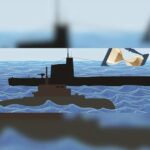
Ahead of Modi’s visit to Paris on July 13, sections of the Indian media said Paris had allowed Safran to co-develop an aero engine to power India’s futuristic fifth-generation advanced medium fighter jet.
By Vikas Gupta
Defence News of India, 6 July 23
The ground could change when it comes to India’s bold program to develop its own indigenous jet engines that will power Indian fighter jets in the protection of Indian airspace.
Prior to Prime Minister Narendra Modi’s visit to France in 2015, sections of the Indian media reported that New Delhi and Paris would reach a government-to-government deal to purchase 36 Rafale fighters for the Indian Air Force. (IAF).
As expected, Modi and French President Francois Hollande announced the controversial sale of 36 Rafales for 7.8 billion euros.
As Modi prepares to return to Paris on July 13, sections of the Indian media have reported that the French government – now one of India’s closest strategic partners – has authorized French engine manufacturer Safran to design, develop , jointly test, manufacture and certify an engine to power India’s futuristic fifth-generation Advanced Medium Combat Aircraft (AMCA).
There will be controversy over an Indo-French engine for the AMCA. The relationship between the Indian Defense R&D Organization (DRDO) and the French company Safran (formerly called Snecma) has been marred by years of fruitless talks over the co-development of an improved Kaveri.
Snecma refused to share key technologies, such as monocrystalline blades and high-temperature materials for the engine’s combustion chamber.
While the Safran engine might have found use in the Tejas Mark 1, Mark 1A and Mark 2 fighters, the French company was reluctant to work with the Gas Turbine Research Establishment (GTRE) – the DRDO lab that develops the Kaveri engine for the Tejas.
Meanwhile, the first foreign original equipment manufacturer (OEM) to offer to co-design and co-develop an engine for the AMCA is the British company Rolls-Royce. The Rolls-Royce engine could also power the deck-based twin-engine indigenous fighter (TED-BF) which would operate from Indian carriers.
The Kaveri engine, rejected for years by Safran (Snecma), should find an application in the engine of the DRDO’s high-performance autonomous vehicle, eponymously named Unmanned Combat Aerial Vehicle (UCAV).
The Kaveri’s 50 kiloNewtons (kN) thrust will suffice for the unmanned UCAV, but it lacks the performance and reliability to power the manned Tejas fighter.
Eventually, Indian fighters will be equipped with General Electric (GE) engines manufactured in the United States: Tejas Mark 1 and 1A fighters will be equipped with GE F-404IN engines. The IAF has signed a Rs 5,375 crore contract with GE for 99 F-404IN engines.
Meanwhile, more powerful GE F-414 engines will power the Tejas Mark 2.
Over the next decade, the Indian Army is expected to purchase nearly a thousand engines for fighter jets alone. These will include 228 engines for 114 multi-role fighters, 83 engines for 83 Tejas Mark 1A fighters, 126 for Tejas Mark 2 fighters, 294 engines for 147 twin-engine and 117 engines for 57 twin-engine Multi-Role Carrier Borne Aircraft.
Sources close to Snecma claim that it is offering an all-new engine that meets stealth requirements. According to our information, the delivery of the engine will take 10 years from the signing of the contract. Safran is sweetening the deal by creating a center of excellence in gas turbine technology in India.
Modi will arrive in Paris on July 13 and hold bilateral talks with the French president on the same day. On July 14, Modi will attend the July 14 Air Force Show. The IAF’s Rafale fighter will take part in the overflight.






